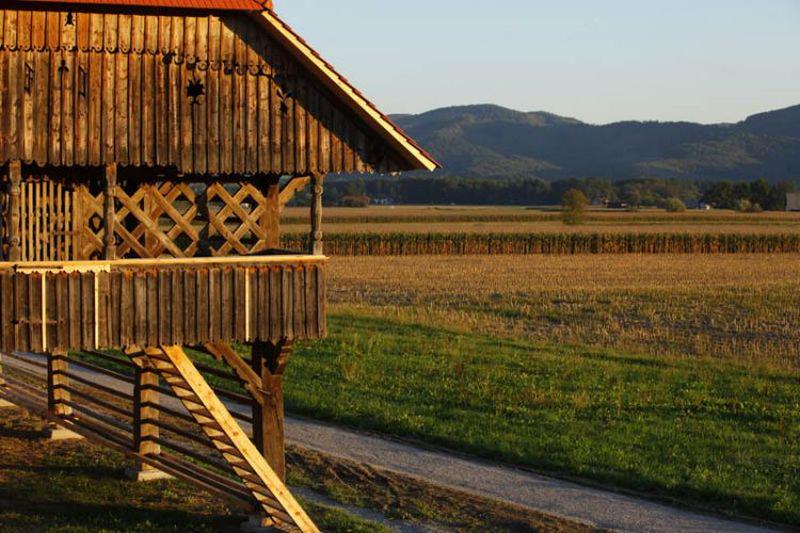
First-time visitors to Slovenia often wonder about unusual wooden structures found on fields and meadows across the country. Some look like simple roofed racks made out of planks of wood, while others are larger – as large as houses -- and considerably more complex. The structures, known in Slovenian as “kozolci,” are traditional Slovenian hayracks, common in most of Slovenia but virtually non-existent outside the country. Used primarily to dry hay, corn, and other plants, they have long been considered a typical example of traditional vernacular architecture. In recent years, they have also become a prominent national symbol.
Despite Slovenia’s small size, the traditional design of the hayracks varies from region to region. In large parts of the Gorenjska (Upper Carniola) region, single straight-line hayracks – the simplest kind – tend to be the most common. Elsewhere, hayrack designs can get very far more complex, with several individual rows of racks joined together and supporting a massive wood or straw-covered roof. Such structures, which look like small barns, enable farm equipment to be protected from the elements. Some of the larger hayracks are even intricately decorated with images of flowers and other folk patterns. The architectural details also depend on the region, as is often the case in a country known for its geographic diversity.
Even the terms used for “hayrack” are regional. “Kozolec” is the most common, but “stog” – derived from an Old Slavic word -- and “toplar” – with German origins -- are also commonly used in some parts of Slovenia. Two of the regions – the Mediterranean West and the Pannonian East – lack hayracks altogether.
But in most of Slovenia, people can hardly imagine meadows, fields, and pastures without these unusual structures. The hayrack is increasingly promoted – and embraced -- as a symbol of the country. When Charles, the Prince of Wales, visited Slovenia several years ago, he was given an original Slovenian hayrack, which he now keeps on one of his properties back home in the United Kingdom. (It is said that it always reminds him of the beautiful Slovenian countryside.) Another “kozolec” stands at the Oxford University Arboretum. And an open-air museum near the Slovenian town of Šentrupert gives visitors a chance to an up-close look at various different types of hayracks.
Some observers, however, fear that hayracks may one day be relegated to museums. Modern-day drying techniques and industrial farming have already led to a reduction in the number of hayracks in the country. In an effort to preserve this unique element of the Slovenian countryside, several municipalities have begun to offer subsidies for anyone willing to repair a hayrack. Only by embracing the traditions that have been passed on to them by their ancestors will Slovenian farmers ensure that the hayrack survives not just as national symbol, but also an integral part of the Slovenian rural lifestyle.

































































